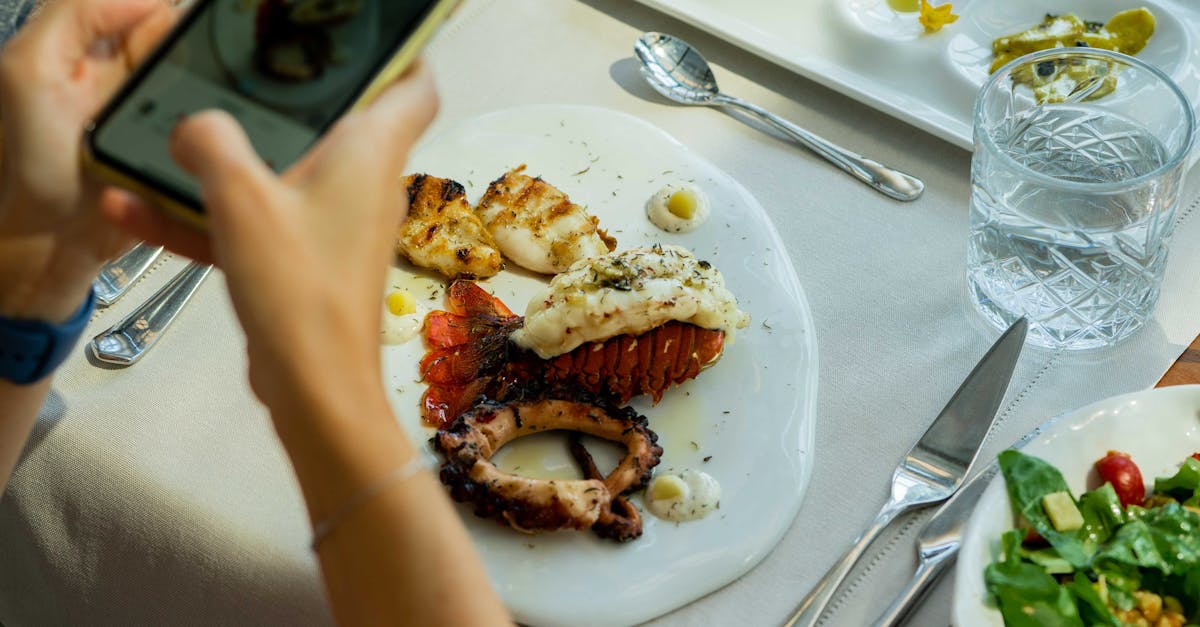
How to Boil Lobster Tails Perfectly
Checking for Doneness
To ensure lobster tails are cooked perfectly, you should watch for specific signs. The meat will transition from a translucent grey to an opaque white, indicating a change that suggests doneness. Additionally, the shells will often turn a bright red or coral colour, enhancing their visual appeal. A thermometer can be invaluable; lobster tails are best at an internal temperature of 60-65°C.
Another method to assess doneness is the texture of the meat. Cooked lobster should feel firm yet slightly springy when pressed. Overcooking can lead to a rubbery texture, so it is crucial to keep an eye on the clock. The total boiling time can vary based on the size of the tails, typically averaging around 8 to 12 minutes for medium-sized ones.
How to Tell When Lobster Tails Are Cooked
The colour of lobster tails is a key indicator of doneness. When they are cooked, the shells transition from a dark greenish-brown to a vibrant red. This change in colour signals that the meat inside is well on its way to being fully cooked. Additionally, the tail meat itself should become opaque and firm to the touch. Both visual changes provide a good initial assessment of whether they are ready to be removed from the pot.
Another reliable method involves checking the internal temperature of the lobster tails. Using a food thermometer, aim for a reading of 60°C to 65°C. At this range, the lobster will be tender yet well-cooked. Overcooking can result in a tough and rubbery texture, so it is essential to monitor both the temperature and visual cues closely. Combining both methods will ensure perfectly cooked lobster tails that maintain their flavour and texture.
Resting the Lobster Tails
After boiling lobster tails, it is essential to allow them to rest for a few minutes. This resting period helps the meat retain its moisture. The heat from cooking continues to gently cook the tails, enhancing their flavour and texture. If served immediately, the tails may be rubbery and lose their succulent appeal.
Allowing the lobster tails to rest also provides an opportunity for the natural flavours to settle. When plated, the lobster should look plump and inviting. This moment allows the cook to prepare side dishes or sauces that perfectly complement the dish. The result is a delicious meal with rich flavours that truly showcase the lobster.
Importance of Resting After Boiling
After boiling, allowing lobster tails to rest is crucial for optimal texture and flavour. During the cooking process, the meat contracts and can become tough. Resting enables the proteins to relax, leading to a more tender and succulent result.
Additionally, resting helps redistribute the juices within the lobster meat. This ensures each bite is moist and packed with flavour. It also provides an opportunity for the heat to equalise, minimising the risk of overcooking. Emergent flavours are better integrated after this brief pause before serving.
Serving Suggestions
Lobster tails can be paired with various sides to elevate your dining experience. Consider serving them alongside buttery garlic mashed potatoes or a fresh, zesty salad featuring citrus vinaigrette. For a more indulgent option, creamy risotto or a side of rich macaroni and cheese can complement the sweet, delicate flavour of the lobster.
Incorporating seasonal vegetables can also enhance the meal's visual appeal and nutritional value. Grilled asparagus or steamed green beans offer a delightful contrast in texture and taste. A light drizzle of lemon-infused olive oil or a sprinkle of fresh herbs can further elevate the flavours, creating a well-rounded dining experience that highlights the lobster tails beautifully.
Pairing Lobster Tails with Sides
When serving lobster tails, selecting the right sides can elevate the meal and create a balanced dining experience. Classic accompaniments include drawn butter, which complements the rich flavour of the lobster. Fresh lemon wedges add a zesty brightness that enhances the sweetness of the meat. For a more substantial side, consider creamy garlic mashed potatoes or herbed rice that can absorb the delightful juices.
Vegetables also play an essential role in creating harmony on the plate. Steamed asparagus or sautéed garlic green beans provide a crisp contrast to the tender lobster. A refreshing salad, featuring mixed greens with a light vinaigrette, offers a palate-cleansing effect. Combining these elements can transform a simple lobster tail dinner into an elegant feast.
FAQS
How long should I boil lobster tails?
Typically, you should boil lobster tails for about 1 to 2 minutes per ounce. For example, a 4-ounce tail would take approximately 4 to 8 minutes.
How can I tell if lobster tails are done cooking?
Lobster tails are done when their shells are bright red, the meat is opaque and firm, and they have an internal temperature of 60°C (140°F).
Why is it important to rest lobster tails after boiling?
Resting allows the juices to redistribute throughout the meat, resulting in more tender and flavourful lobster tails.
What are some good side dishes to serve with lobster tails?
Lobster tails pair well with a variety of sides such as garlic butter rice, steamed vegetables, or a fresh green salad.
Can I boil frozen lobster tails?
Yes, you can boil frozen lobster tails, but it’s best to thaw them in the refrigerator beforehand for more even cooking. If boiling from frozen, increase the cooking time slightly.
Related Links
How to Grill Lobster Tails for Maximum FlavourRoundup of Lobster Tail Cooking Techniques
Review of the Best Lobster Tail Recipes
10 Creative Ways to Serve Lobster Tails
Why Baking Lobster Tails is a Great Cooking Method
The History of Lobster Tails in British Cuisine
What to Serve with Lobster Tails for a Complete Meal